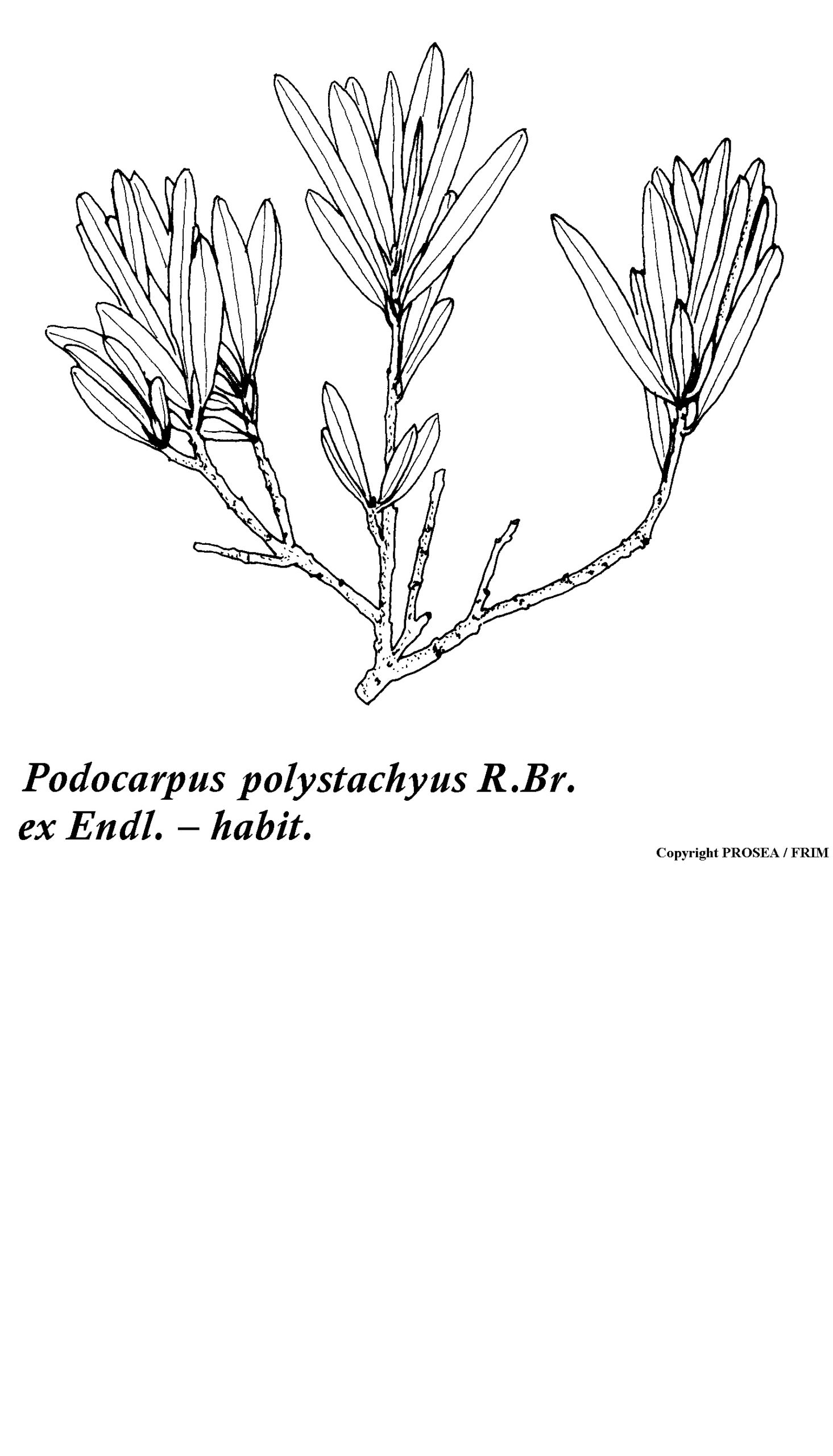Podocarpus polystachyus R.Br. ex Endl.
Family
Podocarpaceae
Synonyms
Podocarpus thevetiifolia Blume, Nageia thevetiaefolia (Blume) F. v. Mueller, N. polystachyus (R.Br. ex Endl.) O. Kuntze.
Vernacular Names
| Malaysia | Podo laut (Peninsular), landin (Bintulu, Sarawak), kandabang (Bajau I’tan, Sabah). |
| Indonesia | Kayu serai (West Kalimantan), kayu karamat (Lingga), arbujin (Maibrat, Irian Jaya). |
| Philippines | Dilang-bukiti (Tagalog). |
| Thailand | Son-bailek (Peninsular). |
| Brunei | Anggeriting. |
Geographical Distributions
Podocarpus polystachyus is distributed across peninsular Thailand, Peninsular Malaysia, the Riau and Lingga Archipelago, Bangka Island, Borneo, the Philippines including Palawan and western New Guinea; also planted outside its natural distribution area in gardens and parks.
Description
P. polystachyus is a small to medium-sized tree that can reach up to measure 20(-40) m tall. The bole is generally branchless for measure about 6 m, occasionally up to measure about 25 m and up to measure about 45 cm in diametre. It is sometimes fluted, shallowly fissured of the bark surface and greyish-brown to deep brown in colour.
The foliage buds are ovate, acute to blunt in shape and with erect scales. The juvenile leaves are acute while the adult leaves are with size of measure about 3-10 cm x 0.6-1.3 cm. The midrib is above a sharp ridge of measuring 0.3-0.4 mm wide. The pollen cones are in groups of up to 5 but sometimes more, sessile and they are with a size of measure about 2-4.5 cm x c. 0.3 cm. The receptacle passes from red to purple in colour when maturing.
Ecology / Cultivation
P. polystachyus occurs mainly in three different habitats which are often occurs gregariously along the high-water mark of sandy beaches or sandy ridges in the mangrove, often frequently in lowland coastal kerangas, and on inland limestone hills up to 1000 m altitude.
Line Drawing / Photograph
References
- Plant Resources of South-East Asia No. 5 (2): Timber trees: Minor commercial timbers.



